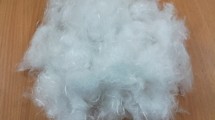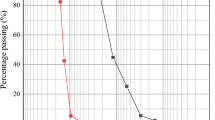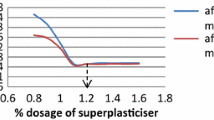Abstract
Experimental programs were carried out to study compressive strength and microstructure of high performance concrete (HPC) subjected to high temperature compared with normal strength concrete (NSC). After the concrete specimens were exposed to a peak temperature of 800°C, the compressive strength was tested. Changes of porosity and pore size distribution of the concrete were measured by using mercury intrusion porosimetry (MIP). Test results show that high performance concrete had higher residual strength although the strength of high performance concrete degenerated much more than the normal strength concrete after high temperature exposed. Variations in pore structure of high performance concrete after high temperature indicated the degradation of the mechanical properties. A model by optimizing the parameters in Ryshkewitch model was developed to predict the relationship between porosity and compressive strength of the high performance concrete.
Résumé
Une série de programmes expérimentaux a été réalisée afin d'étudier la résistance à la compression et la microstructure des bétons à haute performance (BHP) soumis à de fortes températures par comparaison aux bétons ordinaires. Les bétons ont été soumis à une température extrême de 800°C, puis la résistance à la compression a été testée. Les changements de porosité et la répartition de la taille des pores dans le béton ont été mesurés par la technique de porosimétrie au mercure. Les résultats des essais ont montré que les bétons à haute performance présentaient des niveaux de résistance résiduelle mais que la résistance des bétons à haute performance se dégradait beaucoup plus que celle des bétons ordinaires après exposition à haute température. Des variations dans la structure des cavités des bétons à haute performance après exposition à de hautes températures ont indiqué la dégradation des propriétés mécaniques. L'étude a donné lieu au développement d'un modèle par optimisation des paramètres du modèle Ryshkewitch afin de prévoir les relations entre la porosité et la résistance à la compression du béton à haute performance.
Similar content being viewed by others
References
Castillo, C. and Durrani, A. J., ‘Effect of transient high temperature on high-strength concrete’,ACI Materials Journal 87 (1) (1990) 47–53.
Sanjayan, G. and Stocks, L. J., ‘Spalling of high-strength silica fume concrete in fire’, —Ibid.,90 (2) (1993) 170–173.
Zhang, B., ‘Relationship between pore structure and mechanical properties of ordinary concrete under bending fatigue’,Cement and Concrete Research 28 (5) (1998) 699–711.
Lankard, D. R., Birkimer, D. L., Fondriest, F. F. and Synder M. J., ‘Effects of Moisture Content on the Structural Properties of Portland Cement Exposed to Temperatures up to 500 Deg. F.’, ACI Special Publication SP25, Detroit, 1971.
Khoury, G. A., ‘Compressive strength of concrete at high temperatures: A reassessment’,Magazine of Concrete Research 44 (161) (1992) 291–309.
Sarshar, R. and Khoury, G. A., ‘Material and environmental factor influencing the compressive strength of unsealed cement paste and concrete at high temperatures’, —Ibid.45 (162) (1993) 51–61.
Rostasy, S. F., Weib, R. and Wiedemann G., ‘Changes of pore structure of cement mortars due to temperature’,Cement and Concrete Research 10 (1980) 157–164.
Chan, Y. N., Peng, G. F. and Chan, K. W., ‘Comparison between high strength concrete and normal strength concrete subjected to high temperature’,Mater. Struct. 29 (1996) 616–619.
Chan, Y. N., Peng, G. F. and Anson M., ‘Spalling Mechanism and Fire Resistance of High Performance Silica Fume Concrete with Different Moisture Content’ Proceedings of the 4th Beijing China, Oct. 1998,3 (1998) 149–153.
Feldman, R. F. and Beaudoin, J. J., ‘Microstructure and strength of hydrated cement’,Cement and Concrete Research 6 (1976) 398–400.
Taylor, H. F. W., ‘A discussion of the paper: Microstructure and strength of hydrated cement by R. F. Feldman and J. J. Beaudoin’, —Ibid.7 (1977) 465–468.
Bouguerra, A., Ledhem, A., Barquin, F., Dheilly, R. M. and Queneudec, M., ‘Effect of microstructure on the mechanical and thermal properties of lightweight concrete prepared from clay, cement, and wood aggregates’, —Ibid.28 (8) (1998) 1179–1190.
Author information
Authors and Affiliations
Rights and permissions
About this article
Cite this article
Luo, X., Sun, W. & Chan, Y.N. Residual compressive strength and microstructure of high performance concrete after exposure to high temperature. Mat. Struct. 33, 294–298 (2000). https://doi.org/10.1007/BF02479699
Received:
Accepted:
Issue Date:
DOI: https://doi.org/10.1007/BF02479699




